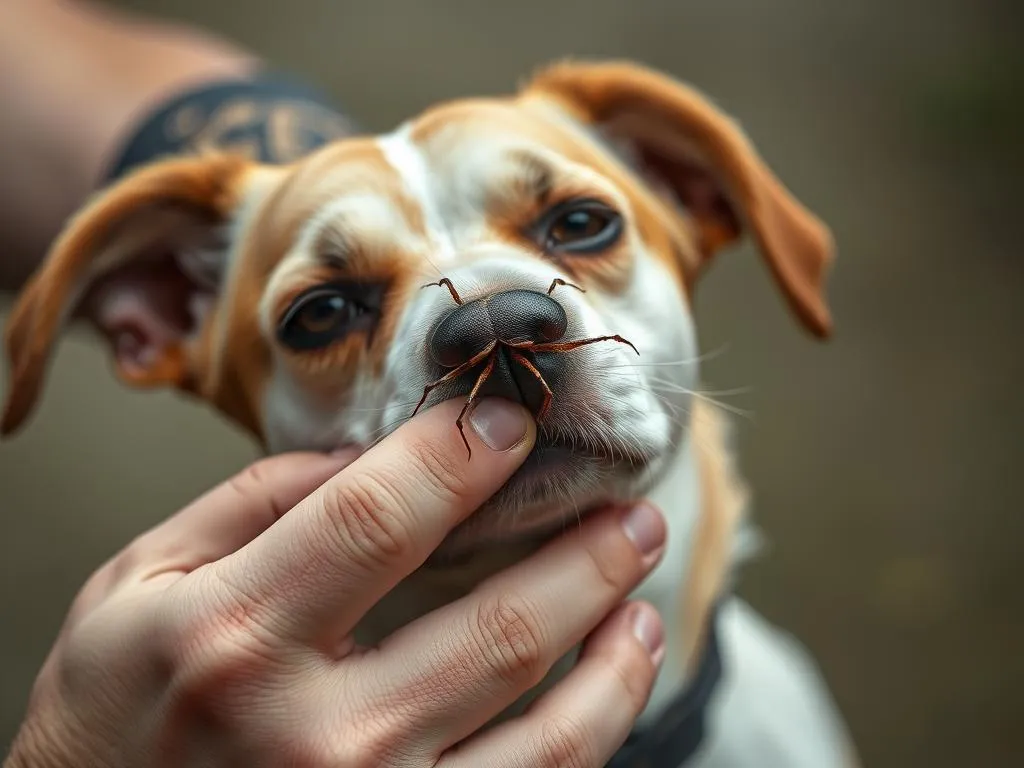
Introduction
Taking care of your dog’s health is vital for their happiness and longevity. One of the most concerning threats to your furry friend is ticks. These tiny parasites can pose serious health risks, making it crucial for dog owners to know how to remove a tick from a dog effectively. In this article, we will delve into the world of ticks, from understanding their biology to identifying and safely removing them from your canine companion. You will also learn about the diseases they can transmit, how to prevent infestations, and when to seek veterinary assistance.
Understanding Ticks
What are Ticks?
Ticks are small arachnids that feed on the blood of mammals, birds, and sometimes reptiles. They go through several life stages, including larva, nymph, and adult. Each stage requires a blood meal to progress to the next.
Common types of ticks found on dogs include:
- Deer ticks (Ixodes scapularis): Known for transmitting Lyme disease.
- American dog ticks (Dermacentor variabilis): Commonly found in grassy areas and can spread Rocky Mountain spotted fever.
Understanding the life cycle of ticks helps in identifying potential infestations and knowing when to be vigilant.
Risks Associated with Ticks
Ticks are not just annoying; they can transmit various diseases that can severely affect your dog’s health. Some of the most concerning tick-borne diseases include:
- Lyme disease: Caused by the bacterium Borrelia burgdorferi, this disease can lead to joint pain, fever, and lethargy.
- Rocky Mountain spotted fever: This serious illness can cause fever, vomiting, and severe damage to internal organs if untreated.
Symptoms of tick-borne diseases in dogs can vary but often include fever, loss of appetite, lameness, and lethargy. Being aware of these symptoms can help you act swiftly if your dog becomes ill.
Identifying Ticks on Dogs
Common Areas Where Ticks Attach
Ticks prefer warm, dark, and moist areas of your dog’s body. Common spots to check include:
- Ears: Ticks often hide in the folds of the ear.
- Neck: The area beneath the collar is a prime target.
- Paws: Ticks can latch onto the pads or between the toes.
- Belly: Dogs with longer fur may harbor ticks in their underbelly.
- Between toes: A favorite hiding spot for ticks.
If you notice unusual behavior, such as excessive scratching or biting at certain areas, it may indicate the presence of a tick.
How to Conduct a Tick Check
To keep your dog safe, conducting regular tick checks is essential. Here’s a step-by-step guide:
- Select a quiet time: Choose a calm moment when your dog is relaxed.
- Use good lighting: Ensure you have adequate light to spot ticks easily.
- Check systematically: Start at the head and work your way down to the tail.
- Feel for bumps: Ticks can feel like small bumps on the skin.
- Use a comb: A fine-toothed comb can help in detecting ticks, especially in longer fur.
It’s advisable to perform a tick check at least once a week during peak tick seasons, typically in the spring and summer.
Tools Needed for Tick Removal
Essential Tools
Before you attempt to remove a tick, gather the following essential tools:
- Tick removal tool: A tick twister or fine-tipped tweezers are ideal for removing ticks.
- Gloves: Wearing gloves helps maintain hygiene and protects you from potential pathogens.
- Alcohol or antiseptic: Useful for cleaning the bite area after removal.
Optional Tools
While not necessary, the following tools can enhance your tick removal experience:
- Magnifying glass: This can help you see small ticks more clearly.
- Container: Use a small container to safely dispose of the tick.
Step-by-Step Guide to Removing a Tick
Preparation
Before starting the removal process, it’s essential to prepare:
- Calm the dog: Speak softly and gently pet your dog to help them relax.
- Gather your tools: Ensure everything you need is within reach to avoid distractions.
Removal Process
Follow these detailed steps to ensure you remove the tick correctly:
- Position the dog: Have your dog lie comfortably on a flat surface.
- Grasp the tick: Using your tick removal tool or tweezers, grasp the tick as close to your dog’s skin as possible. Avoid squeezing the tick’s body, as this can cause it to release more pathogens.
- Pull gently and steadily: With a firm grip, pull the tick straight out without twisting or jerking. This will help ensure that the entire tick, including the head, comes out.
- Check for the head: If the tick’s head remains embedded, use the tweezers to gently extract it. If you can’t remove it completely, consult a veterinarian.
Aftercare
Once the tick is removed, follow these aftercare steps:
- Clean the bite area: Use alcohol or antiseptic to clean the site to prevent infection.
- Dispose of the tick: Place it in a sealed container or bag and dispose of it safely. Some recommend saving the tick for identification by a vet if your dog shows symptoms later.
- Monitor for symptoms: Keep an eye on the bite area for signs of irritation or infection, such as redness, swelling, or discharge. Be vigilant for any unusual behavior in your dog, such as lethargy, loss of appetite, or fever.
Preventing Tick Infestations
Tick Prevention Products
Preventing ticks is crucial for your dog’s health. There are several effective products available:
- Topical treatments: These are applied to your dog’s skin, providing protection for weeks.
- Collars: Tick collars release chemicals that repel ticks and can last several months.
- Oral medications: These tablets kill ticks upon biting and are often effective for a month.
Consult your veterinarian for recommendations on which products would be best suited for your dog.
Environmental Control
Creating a tick-safe yard is also essential in preventing infestations. Here are some tips:
- Keep your lawn trimmed: Regularly mow your grass and remove debris where ticks thrive.
- Create barriers: Use wood chips or gravel to create a border between your yard and wooded areas.
- Regular grooming: Brushing your dog regularly not only keeps their coat healthy but also helps in spotting ticks early.
Seasonal Considerations
Understanding tick seasons is vital in prevention efforts. Ticks are most active in warm months, but they can survive in mild winters. Adjust your prevention strategies based on seasonal activity, increasing checks and treatments during peak times.
When to Seek Veterinary Assistance
Signs of Complications
After removing a tick, monitor your dog for any signs of complications. Seek veterinary care if you notice:
- Persistent lethargy: If your dog seems unusually tired or inactive.
- Loss of appetite: A sudden decrease in food intake can be a warning sign.
- Fever: A raised temperature, usually above 102.5°F, could indicate infection.
Early intervention can be crucial in preventing serious health issues associated with tick-borne diseases.
Regular Health Check-Ups
Regular veterinary visits are essential for maintaining your dog’s overall health. Discuss tick prevention strategies with your vet, so you can stay informed about the best practices and products available.
Conclusion
Knowing how to remove a tick from a dog is a critical skill for any dog owner. Understanding ticks, their risks, and prevention methods will help you protect your furry friend from potential harm. Consistent monitoring and prompt action can significantly reduce the risks associated with tick infestations. Stay proactive about your dog’s health, and don’t hesitate to reach out to your veterinarian for advice or assistance.









